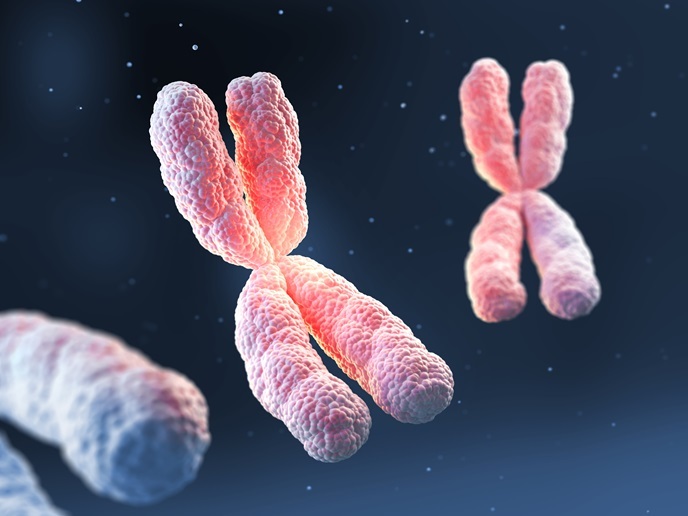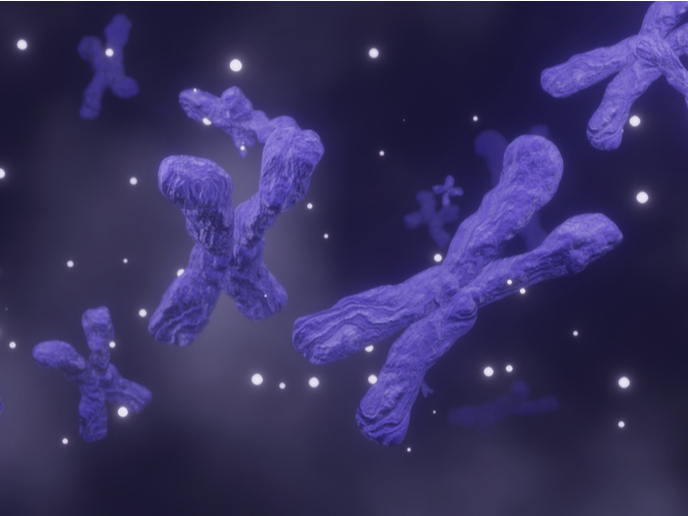Cracking the code of DNA folding machines
When a cell divides, it must duplicate and organise its DNA, an enormous task given the length and complexity of the genetic material. You can think of DNA as a long thread that must be tightly and precisely packed into a tiny space without tangling.
Folding and organising DNA
The CHROCODYLE(opens in new window) project, carried out with support from the European Research Council(opens in new window), set out to understand exactly how this packing is achieved. To do this, project coordinator Stephan Gruber and his team at the University of Lausanne(opens in new window) in Switzerland focused on structural maintenance of chromosomes (SMC) complexes, protein machines that actively fold and organise DNA. These complexes are essential for keeping genetic material intact, which is vital for cell survival and function. A key player here is condensin, one of the SMC complexes that shape DNA into loops. These loops are crucial for DNA repair, and for ensuring chromosomes are properly distributed during cell division. However, the precise mechanics of how SMC complexes move along DNA and form loops has remained unclear. CHROCODYLE aimed to change that.
High-throughput genetic engineering
To tackle this challenge, the team turned to a simpler model organism: the bacterium Bacillus subtilis, which contains a version of the condensin complex that is easier to study than its human counterpart. This allowed the researchers to perform high-throughput genetic engineering, generating over 1 000 mutant bacterial strains with specific alterations in the SMC proteins. These mutants were then used in a technique called chemical cross-linking to map the molecular structure of the SMC complex with high precision. “We were able to build a very detailed picture of what the bacterial SMC machine looks like and how its different parts are arranged,” says Gruber. At the same time, the researchers studied how SMC complexes interact with DNA both in vitro and in living bacterial cells. They used advanced tools such as crystallography, microscopy, ChIP-Seq and Hi-C to observe where and how SMC binds and acts on chromosomes. This combination of structural and functional studies gave them a full view of how the SMC machinery works. One of the most significant outcomes of this research was the development of a new model for DNA loop extrusion, i.e. how SMCs move along DNA. “The SMC motor moves in large steps and can easily bypass both small and large obstacles on DNA,” Gruber explains. “This is unlike anything previously proposed for other DNA motors.”
From bacteria to breakthroughs
The impact of CHROCODYLE extends beyond bacterial biology. In humans, malfunctioning SMC proteins are linked to congenital disorders and frequently mutated in cancer. The knowledge gained from this project could help us understand the specific molecular errors that cause these diseases, potentially leading to ideas for future treatments. “Our work may eventually help reveal the molecular defects causing these diseases and provide insights into potential therapies,” adds Gruber. Additionally, understanding the SMC machine in bacteria could potentially contribute to the development of new drugs to fight bacterial infections. These insights offer a way to address antibiotic resistance, one of the most pressing challenges in global health today. Finally, the project has also laid the groundwork for future breakthroughs. With new techniques such as cryo-electron microscopy, researchers are now resolving SMC-DNA structures at near-atomic resolution, confirming and building on CHROCODYLE’s findings. This progress represents a significant step forward in the study of life’s essential molecular machines.





